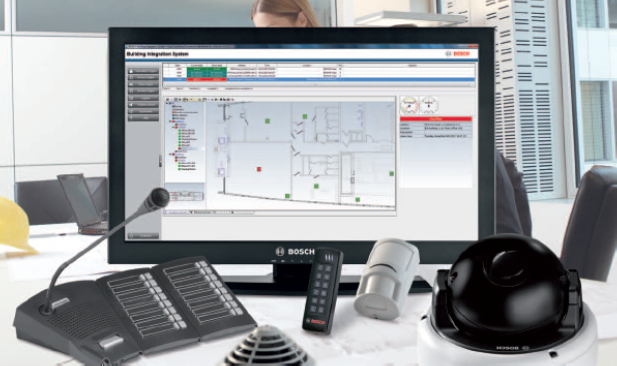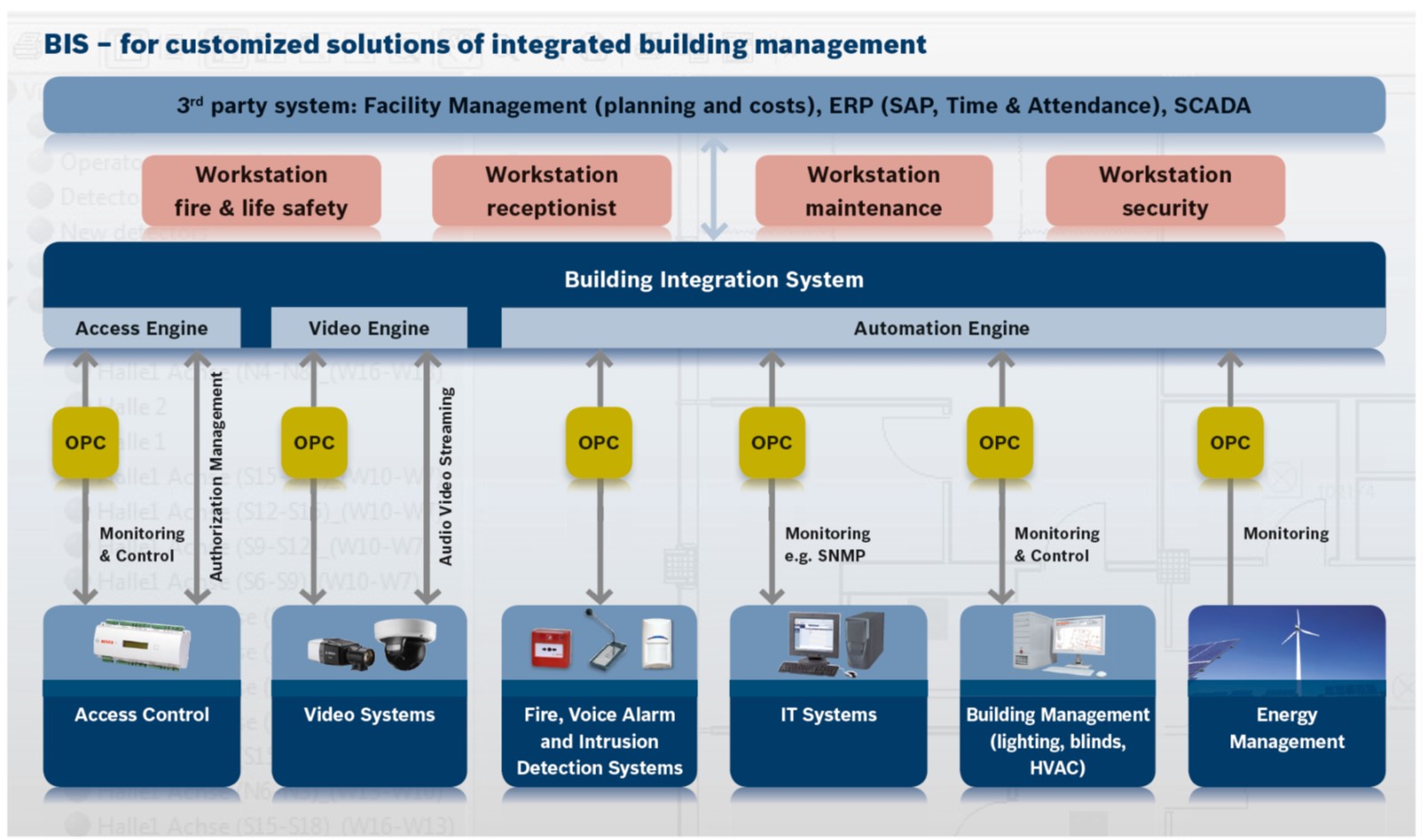Building Integration System

When designing comprehensive security and safety systems, both planners and building operators often choose to mix and match fire protection, public address, access control, video surveillance and management systems from multiple vendors.
 Sometimes this is for budget reasons, sometimes to take advantage of different functionalities or to reduce dependence on a single vendor. Whatever the reasons, designing the best possible security concept can easily result in unwanted complexity and a lack of integration and transparency. It also increases training costs and makes it harder to set up protocols and permissions.
Sometimes this is for budget reasons, sometimes to take advantage of different functionalities or to reduce dependence on a single vendor. Whatever the reasons, designing the best possible security concept can easily result in unwanted complexity and a lack of integration and transparency. It also increases training costs and makes it harder to set up protocols and permissions.
At the same time, data entry and management becomes a time-intensive, laborious and error-prone process. These are precisely the sorts of challenges that the Bosch Building Integration System (BIS) was designed to solve.
By bringing all your building systems together on a single platform – regardless of software, hardware or technology – BIS enables your organization to:
- Connect and integrate an extensive range of Bosch and 3rd party security and safety products for maximum design flexibility
- Correlate and verify events and data from all subsystems on a single user interface
- Visualize and create situational awareness anytime and anywhere for faster, more accurate response times
- Support operators with rules-based workflows to streamline processes
- Easily access post-event reporting and forensic analysis to help in future process optimization
- Protect your investment by being open, flexible and always backward compatible for maximum return on investment

Genuine integration provides a seamless experience
The key feature of the Building Integration System (BIS) platform is its ability to truly integrate all technologies – both Bosch and 3rd party products and systems. Using open and standardized technologies such as OPC, ONVIF, HTML and JavaScript, XML and AutoCAD®, the modular software system can be used to manage a wide variety of solutions from different vendors.
BIS provides connections to monitor or trigger all of the following subsystems:
- Intrusion alarm systems
- Fire alarm systems
- Access control systems
- Video surveillance and recording systems
- Evacuation and public address systems
- Communications systems, gate and door control
- Building automation (e.g. heating, air conditioning and ventilation)
